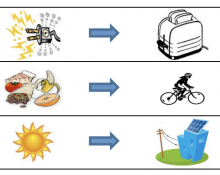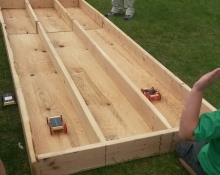Solar Energy Basics
Students will be able to describe the basic principles of solar power and list advantages and disadvantages of using solar power. Students will be able to distinguish between passive solar and photovoltaic solar power. Students will be able to determine what data from a solar array represents. Students will be able to determine the cause of energy generation trends when observed over longer periods of time.
Students will learn the basics of solar power and the difference between photovoltaic solar power and passive solar power. They will also learn the pros and cons of solar power and be able to describe the





